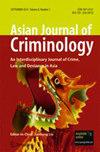This study investigates sentencing disparity under the sentencing guidelines in China. Drawing upon the firsthand data of 509 criminal cases from a county-level court in 2015, our research examines the impact of legal and extralegal factors on sentencing outcomes and unveils a multiplicity of sentencing practices by judicial officers with three particular findings. First, the sentencing guidelines have to a great extent guided and affected sentencing judges, especially with regard to their in/out decisions (e.g., probation vs. imprisonment) and decisions on the length of imprisonment sentences. Second, substantial discretionary power is still left open for judges to determine in/out decisions. More specifically, female, elderly, and socially advantaged offenders are given more lenient sentences than others in judges’ in/out decisions. Third, there are different sentencing patterns across crime types (e.g., traffic casualty and dangerous driving); that is, offenders committing ordinary traffic casualty are under-punished while those committing dangerous driving are over-punished. These findings indicate that formal sentencing guidelines fail to reduce sentencing inconsistency by fostering a uniform and principled model of sentencing. This is mainly because the State’s overarching criminal justice policy has continued to have strong ramifications for sentencing outcomes in China.


